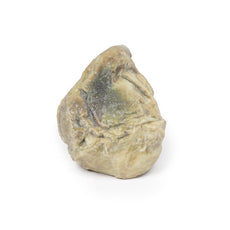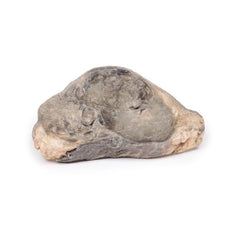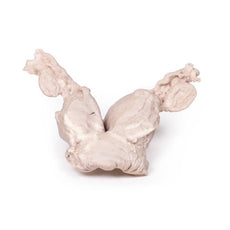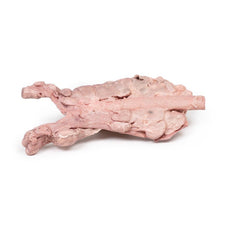Your shopping cart is empty.
3D Printed Cerebral Haemorrhage, Secondary to Acute Myeloid Leukaemia
Item # MP2009Need an estimate?
Click Add To Quote

-
by
A trusted GT partner -
3D Printed Model
from a real specimen -
Gov't pricing
Available upon request
3D Printed Cerebral Haemorrhage, Secondary to Acute Myeloid Leukaemia
Clinical History
A 22-year-old male presented with a 2-week history of generalised malaise,
weight loss and
bruised skin without any trauma. He recently developed 5 days of productive cough and fevers. He was admitted to
hospital for further investigations but had a sudden loss of consciousness and died a few minutes after
admission to hospital.
Pathology
The specimen is a horizontal slice of brain displaying the superior cut surface. In the
right
frontal and parietal regions are two large intraparenchymal haemorrhages each 5 cm in maximum diameter. Several
smaller haemorrhages are present in the white matter of both hemispheres. This is an example of multiple
intraparenchymal cerebral haemorrhages in a patient with acute myeloid leukaemia (AML).
Further Information
Intraparenchymal brain haemorrhages are a result of small, ruptured vessels
within the
brain causing haemorrhage. They are usually associated with sudden onset neurological symptoms. The most common
causes for spontaneous (no-traumatic) intraparenchymal hemorrhages are hypertension and cerebral amyloid
angiopathy with a peak incidence in the 6th decade of life.
AML is a cancer of haematopoietic progenitors causing bone marrow failure, due to immature blast cell accumulation in the marrow. The immature blasts affect the production of other bone marrow-derived cells leading to bone marrow failure causing anaemia (decreased erythrocytes), thrombocytopaenia (decreased platelet production and a haemorrhage tendency) and neutropenia (decreased neutrophil production). These in turn lead to a wide spectrum of disease complications, which have to be anticipated and managed. Infection is the leading cause of death in AML as a result of neutropenia. Intracranial haemorrhage is the second most common cause of death in AML, due to low or dysfunctional platelets caused by the thrombocytopaenia. A severe form of haemorrhage is termed disseminated intravascular coagulation (DIC) is common in AML. DIC is characterised by small blood clots developing throughout the bloodstream, blocking capillaries. The increased clotting depletes the platelets and clotting factors needed to control bleeding, causing excessive bleeding.
Symptoms depend on the location and severity of the bleed. Interventions include surgical evacuation of the haematoma, reversal of the coagulopathy, treatment of any seizures, and regulation of the intracranial pressure. Interventions are dependent on the severity of the bleed and clinical context. The 30-day mortality for intracerebral haemorrhage ranges from 35-50% with most deaths occurring in the first 48 hours.
Download: Handling Guidelines for 3D Printed Models
Handling Guidelines for 3D Printed Models
GTSimulators by Global Technologies
Erler Zimmer Authorized Dealer
The models are very detailed and delicate. With normal production machines you cannot realize such details like shown in these models.
The printer used is a color-plastic printer. This is the most suitable printer for these models.
The plastic material is already the best and most suitable material for these prints. (The other option would be a kind of gypsum, but this is way more fragile. You even cannot get them out of the printer without breaking them).The huge advantage of the prints is that they are very realistic as the data is coming from real human specimen. Nothing is shaped or stylized.
The users have to handle these prints with utmost care. They are not made for touching or bending any thin nerves, arteries, vessels etc. The 3D printed models should sit on a table and just rotated at the table.




































































